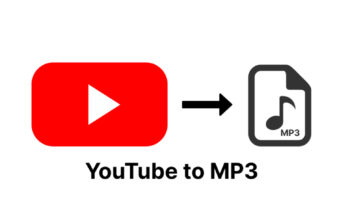Healthcare Technology is revolutionizing how we consider healthcare. as soon as limited to hospitals and clinics, modern care is transferring hastily into the home environment. This shift is basically pushed by using smart improvements like synthetic intelligence (AI), far off tracking devices, and digital consultations. In this text, we’ll explore how future healthcare generation is elevating at-home care, making it safer, greater efficient, and personalized for every person—from seniors to sufferers dealing with continual conditions.
Why At-Home Healthcare Is Gaining Momentum
Healthcare at home is now not just an alternative—it is quick becoming a need. right here’s why:
- Growing variety of growing old populations
- Growing burden of chronic illnesses (e.g., diabetes, high blood pressure)
- Shortages in the healthcare body of workers
- Post-pandemic awareness on contactless care
- Patient preference for comfort
These factors are pushing innovation forward and changing the way healthcare is brought.
Key Drivers of At-Home Care Innovation
1. Telehealth and virtual Consultations
Telehealth permits sufferers to connect with medical doctors, therapists, or professionals via video calls or apps. this is mainly beneficial for:
- Ordinary check-ups
- Intellectual health consultations
- Publish-surgery comply with-ups
- Minor infections or ailments
Benefits of Virtual Care:
- Saves time and travel costs
- Reduces hospital visits
- Increases access for rural areas
- Supports patients with mobility issues
2. Faraway patient tracking (RPM)
RPM makes use of digital gadgets to track crucial fitness metrics from domestic and send real-time updates to healthcare providers.
Common RPM tools:
- Blood pressure cuffs
- Glucose monitors
- Pulse oximeters
- ECG monitors
How It Helps:
- Tracks progress without in-person visits
- Alerts doctors early about potential complications
- Encourages patient accountability
- Reduces hospital readmissions
How AI-Powered future Healthcare generation Is raising At-home Care
Synthetic Intelligence is playing an essential role in pushing domestic healthcare forward. right here’s how:
AI-driven equipment and capabilities:
- Symptom checkers: Apps use AI to assess signs and symptoms and propose next steps.
- Predictive analytics: AI can predict the probability of future health occasions (like a coronary heart assault).
- Chatbots: provide 24/7 support for fundamental health queries.
- Customized remedy plans: AI analyzes your scientific history to signify more targeted remedies.
Everite answers, a pacesetter in AI health tools, emphasizes how clever algorithms are making diagnoses extra accurate and fast, even from home.
The role of smart devices and Internet of scientific things (IoMT)
The net of medical matters refers back to the network of clever clinical devices that accumulate, examine, and transmit health statistics.
Examples of IoMT devices:
- Smartwatches with ECG sensors
- Bluetooth-enabled glucose video display units
- Smart inhalers
- Medication dispensers with indicators
- Clever beds that monitor movement and sleep
Benefits of IoMT:
- Continuous health tracking
- Fewer emergency visits
- Real-time data access for caregivers
- Better chronic condition management
Challenges in home-based totally Healthcare Tech
Notwithstanding all the advantages, there are a few challenges:
- Digital Divide: now not all of us is tech-savvy, particularly older adults.
- Privacy issues: affected person’s data is vulnerable to hacking without right encryption.
- High preliminary costs: a few devices or systems may be expensive at the start.
- Regulatory Gaps: no longer all fitness tech is accepted or standardized.
Future trends in domestic health Technology
1. virtual reality (VR):
Used for ache comfort, remedy, and intellectual health help.
2. Smart toilets:
These analyze urine and stool samples for early disease detection.
3. Voice Assistants for Health:
AI-powered assistants like Alexa Care Hub help elderly users stay on schedule with meds and appointments.
4. Blockchain for Health Data:
Used to secure and share health records without tampering or duplication.
FAQs: How Future Healthcare Technology Is Elevating At-Home Care
Q1. Can I agree with wearable devices for severe health situations?
Yes, many wearable gadgets are FDA-approved and appropriate for tracking continuous situations.
Q2. What’s the difference between telehealth and faraway patient monitoring?
Telehealth is ready communication (video calls), whilst RPM entails device-primarily based data tracking.
Q3. Are these devices covered via insurance?
Some insurance plans cowl telehealth services and RPM equipment. It varies by provider.
Q4. This fall. Is AI replacing docs?
No, AI assists docs by offering better records and predictions. It does not update clinical judgment.
Q5. How can aged patients gain from this tech?
With caregiver support, consumer-friendly gadgets, and voice-controlled tools, elderly patients can effortlessly adapt.
Conclusion
The future of healthcare is already right here, and it’s in our houses. way to AI, telemedicine, IoMT gadgets, and digital health platforms, patients can now experience excellent care without ever getting into a hospital. experts how future healthcare era is raising at-home care empowers people to take control in their properly-being, live extra independently, and reduce healthcare fees.
Whether you’re handling a chronic infection or truly searching for handy medical aid, embracing those improvements can improve health effects and best of lifestyles. because the era continues to evolve, the boundaries of what can be completed at domestic will maintain expanding—bringing healthcare nearer than ever earlier than.



